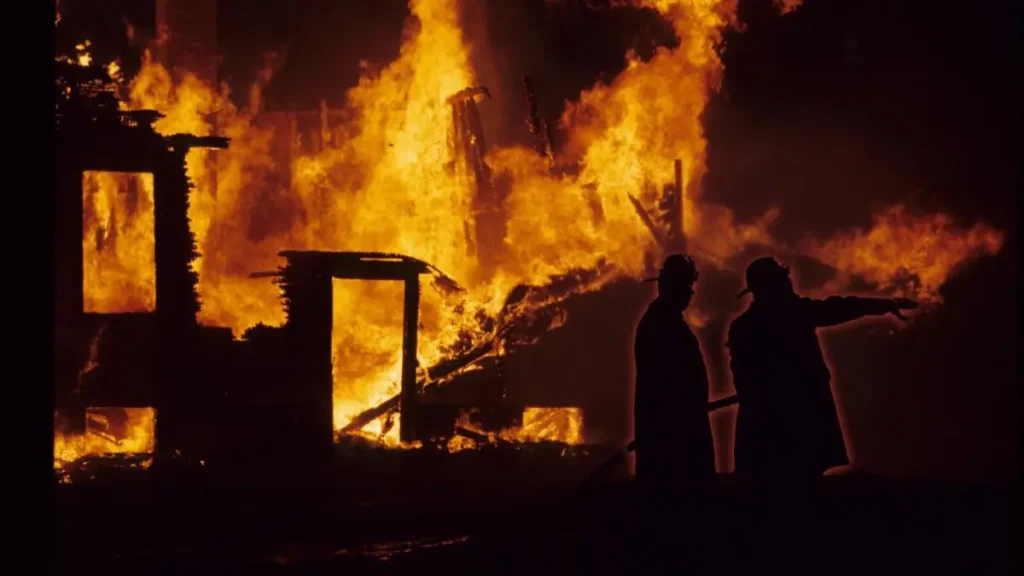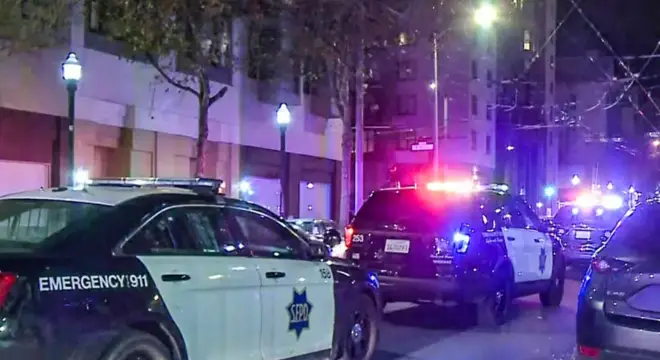One Dead, Three Critically Injured in Lewisville Mobile Home Fire
I want to walk you through what happened in the simplest, most human way possible, because tragedies like this hit differently when you understand the timeline.
Just after 2:30 a.m., inside the Eagle Ridge Mobile Home Park on Holfords Prairie Road, a fire tore through a family’s mobile home. When firefighters reached the scene, the entire structure was already burning hard — the kind of flames you can feel even from a distance.
One person had managed to escape. Imagine that moment: running out through smoke, realizing the rest of your family is still inside, and having seconds to tell firefighters, “Four people are in there — including a child.”
The crew didn’t waste a breath. They pushed their way through the heat and pulled out every person trapped inside. But by the time they got them out, the child and two adults had gone into cardiac arrest. First responders started CPR right there on the ground, doing everything they could until everyone was rushed to the hospital.
One adult woman didn’t make it. The other three are still fighting for their lives.
It’s the kind of story that leaves you quiet for a moment, because you realize how fast a normal night can turn into something you never recover from.
Let me know if you want Section 2 next, or if you want me to adjust the tone further.
Inside the Rescue — Firefighters’ Minute-by-Minute Response
When the first crew from Lewisville Fire Department (LFD) reached the site, they didn’t just spray water — they rushed in, because time was everything. Flames were pouring out of the mobile home, thick smoke everywhere. That lone person who escaped told them: “There are four people inside, including a child.” That warning changed everything.
Firefighters pushed into the burning unit, searched rooms, fought through smoke and heat — and found the trapped family. They pulled out three adults and one child. Two adults + the child were in cardiac arrest the moment they emerged. Crews immediately started CPR, as sirens wailed and fire hoses roared. Then all five were rushed to nearby hospitals.
It’s harrowing to imagine being in their shoes — the fear, the smoke, the helplessness. But thanks to quick action and bravery, no one else got trapped. That rescue effort saved some lives that night, even if the ordeal ended in tragedy for one.
Firefighters in other recent incidents have shown the same bravery — like in East Charlotte, where crews rescued a puppy from a burning home. Read that full story here.
What We Know — And What Still Remains Under Investigation
Here’s what authorities — and media reports — have confirmed so far: A woman died. Three others remain hospitalized in critical condition. The child and two adults had suffered cardiac arrest.
But there are big blanks still: the victim’s name hasn’t been released. Fox 4 reports that the cause of the fire is still under investigation by fire-department authorities.
That uncertainty should make us pause. In sad events like this, it’s normal for details to be withheld — pending family notification, investigation, official reports. But until we get that info, any speculation would do injustice to the victims and their loved ones.
similar investigation recently unfolded in North Tonawanda after a family’s home was destroyed in a sudden fire. Here’s how officials handled that case.
Why Mobile Homes Are Especially Vulnerable — A Reality Check
You might wonder — why mobile homes? Why does a fire there often end so badly? From what safety-experts and past incidents show, mobile homes can be more vulnerable than traditional houses for several reasons:
- Their construction materials and layout often make fires spread faster. Thin walls, compact spaces, shared walls: all of these can turn a small spark into a big flame quickly.
- Heating or electrical systems may be older, or less strictly regulated than in full houses — increasing risk of wiring faults or malfunction. Especially in older mobile-home parks.
- Escape routes may be limited. In a compact unit, heavy smoke and fast-moving flames give precious little time.
It’s an angle often missing in breaking-news coverage — but it matters. Because without understanding the built-in risks, we treat these tragedies as “accidents” — not systemic vulnerabilities.
Fire-safety concerns like these aren’t limited to Texas — just recently, firefighters in Paradise managed to contain a major residential blaze while investigators worked to determine its cause. You can read that report here.
Safety Checklist for Mobile-Home Residents — What You Should Know (and Do)

If you or someone you know lives in a mobile home — or is thinking of living in one — please take a moment to read this. Because sometimes tragic lessons like these can help prevent future ones.
You should:
- Ensure working smoke alarms in every room — and test them regularly.
- Have a fire-escape plan ready with all family members: at least two exits, a pre-decided meeting point outside.
- Keep space heaters, electrical devices checked — old wiring + heavy use is a dangerous combo in compact homes.
- Keep a fire extinguisher handy — especially if you cook or use any heating device indoors.
- Be cautious at night: if you wake up to smell smoke or see flame, act quickly — every second counts.
This checklist may feel basic. But that’s the point: often it’s the simple precautions that make the difference between life and death.
Many local safety enthusiasts share real-time fire-safety tips and emergency alerts on WhatsApp channels these days — worth checking out if you want quick, practical guidance during incidents like this.
The Bigger Picture — Texas Needs Stronger Mobile-Home Safety Rules
When you look past this single tragedy, a tougher question comes up: Are mobile-home residents getting the level of safety they deserve? And honestly, Texas — like many states — still has a long way to go.
Mobile homes are often affordable options for families. But that affordability shouldn’t mean weaker safety regulation. Most people don’t realize this: many older mobile-home parks still operate under outdated wiring systems, aging insulation, or minimal fire-safety planning. And unless someone reports a problem, these issues rarely get fixed.
This isn’t about blaming residents. It’s about the system around them.
Texas could easily tighten safety by:
- Requiring annual electrical inspections for older mobile homes
- Enforcing updated fire-safety codes across all parks
- Offering low-income grants for smoke alarms, wiring upgrades, and safer heating systems
- Training residents on evacuation drills, because many don’t get access to this
- Mandating fire-extinguisher placement in every unit
These aren’t big, expensive reforms. They’re common-sense protections. And every time we lose a life in a fire like this, the question becomes painfully clear: Why aren’t we doing these things already?
If lawmakers and local authorities take this seriously, tragedies like the Lewisville fire won’t be just stories — they’ll become catalysts for real change.
What Happens Next — Updates We’re Still Waiting For
For now, we’re all waiting on answers.
Investigators still need to confirm what caused the fire — electrical issue, appliance failure, heating source, or something else entirely. That report will tell us whether this was completely accidental or if warning signs were missed.
We’re also waiting to hear more about the three survivors who remain in critical condition. Their recovery won’t be quick, and their story doesn’t end here. Families in the community are hoping for any sign of improvement.
There may also be updates from:
- Lewisville Fire Marshal’s office
- Hospital staff regarding the child’s condition
- City officials addressing safety concerns in the mobile-home park
- Community groups launching fundraisers or support drives
Once investigators release the official cause, we’ll finally understand what sparked the fire that changed this family’s life — and what needs to be fixed so it doesn’t happen again.
Before moving on, I want to ask you something directly: What part of this story hits you the hardest — the rescue, the loss, or the safety gaps?
Your answer will help me shape the next sections with the depth you want.
For more community safety stories and fire-incident breakdowns, explore our full coverage on Build Like New.
Disclaimer: The details in this article are based on available reports and official statements at the time of writing. Some information may change as authorities release updates. This content is for public awareness and should not be treated as an official investigation summary.


